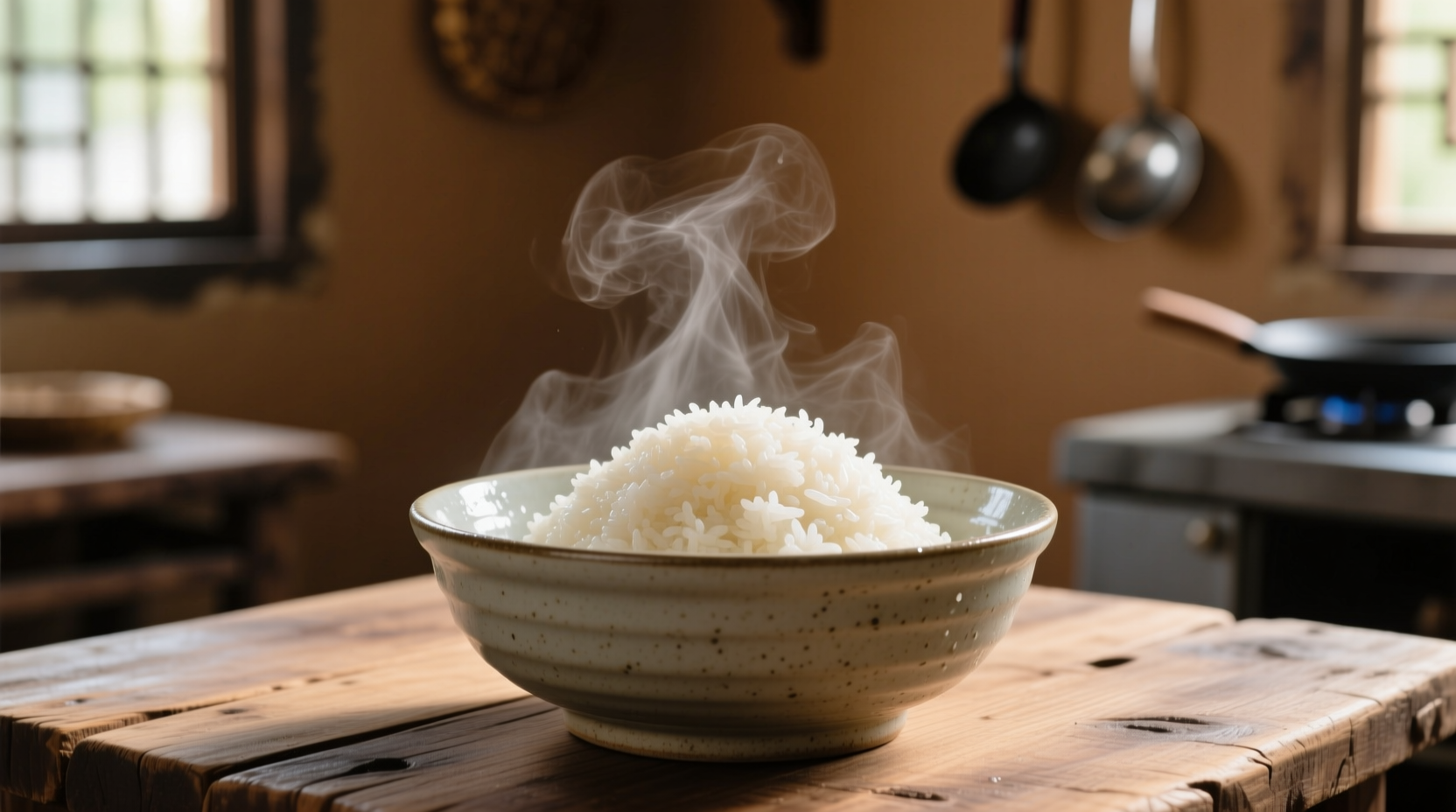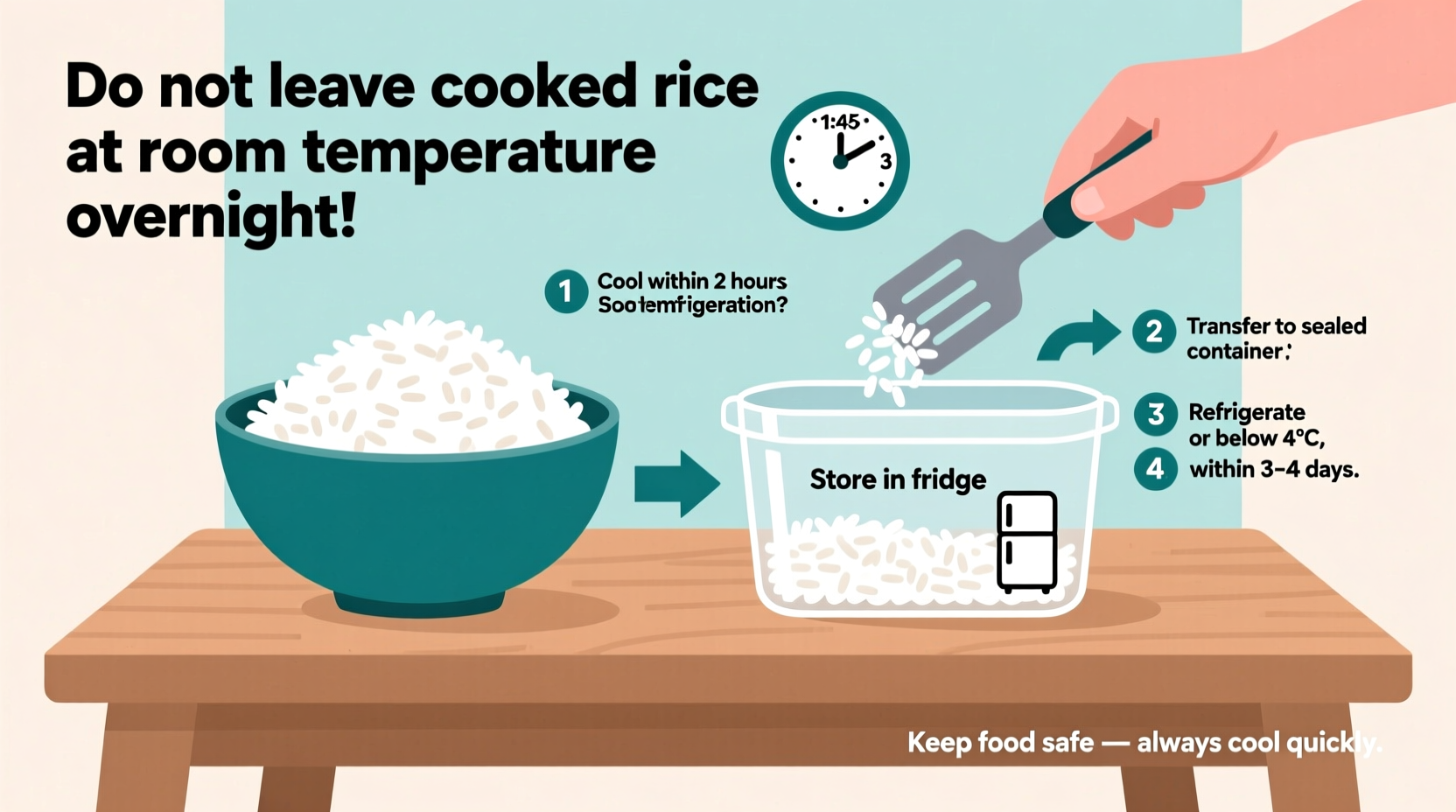Properly storing cooked rice isn't just about convenience—it's a critical food safety practice. Many home cooks don't realize that improperly stored rice causes thousands of foodborne illness cases annually. As someone who's worked in both professional kitchens and taught home cooking for over 15 years, I've seen how simple storage mistakes can turn a harmless side dish into a health hazard.
Why Rice Storage Requires Special Attention
Rice presents unique food safety challenges because of Bacillus cereus, a bacteria commonly found in soil that survives cooking. When rice sits in the "danger zone" (40°F-140°F / 4°C-60°C) for too long, these spores multiply and produce heat-stable toxins that cause vomiting and diarrhea—even after reheating.
According to the FDA Food Code, cooked rice must be cooled from 135°F to 70°F within 2 hours and to 41°F or below within 6 hours total. This timeline is critical because B. cereus doubles every 20 minutes in ideal conditions.
The Critical Cooling Phase: First 60 Minutes
What you do immediately after cooking determines your rice's safety:
- Spread rice thin in a clean baking sheet or shallow container—never leave it in the cooking pot
- Stir occasionally to release trapped steam and accelerate cooling
- Avoid sealing containers until rice reaches room temperature (about 70°F/21°C)
- Use the two-hour rule: Refrigerate within 1 hour in hot climates (above 90°F/32°C) or 2 hours in normal conditions
Professional kitchens often use ice baths for rapid cooling, but home cooks can achieve safe temperatures by spreading rice in a thin layer. This critical cooling phase prevents bacterial growth before refrigeration even begins.

Refrigeration: Step-by-Step Storage Guide
Follow these precise steps for safe refrigerated storage:
- Transfer cooled rice to airtight containers (glass or BPA-free plastic)
- Portion into single-use servings to minimize repeated temperature changes
- Label containers with date and time of storage
- Place in main refrigerator compartment (not the door where temperatures fluctuate)
- Set refrigerator to 40°F (4°C) or below—verify with a thermometer
| Storage Method | Maximum Duration | Quality Indicator |
|---|---|---|
| Room Temperature | 2 hours max | Discard if left out longer |
| Refrigerator (40°F/4°C) | 3-4 days | Firm texture, no sour smell |
| Freezer (0°F/-18°C) | 6-8 months | No ice crystals, original color |
Freezing for Long-Term Storage
Freezing preserves rice quality longer than refrigeration:
- Cool rice completely using the spreading method
- Portion into 1-cup servings (ideal for single meals)
- Place portions in freezer bags, removing excess air
- Alternatively, use silicone molds for portioned rice cakes
- Label with date and contents before freezing
The USDA Food Safety and Inspection Service confirms that frozen rice remains safe indefinitely, though quality peaks within 6 months. For best results, freeze rice within 24 hours of cooking.
Safe Reheating Practices
Proper reheating destroys bacteria but doesn't eliminate existing toxins. Always:
- Thaw frozen rice overnight in the refrigerator
- Add 1-2 tablespoons of water per cup before reheating
- Heat to 165°F (74°C) minimum internal temperature
- Stir frequently for even heating
- Consume immediately after reheating—never re-refrigerate
Microwave reheating works well when covered with a damp paper towel. For frozen portions, add 30-60 seconds per cup to heating time. The CDC specifically warns that reheating contaminated rice won't prevent illness from pre-formed toxins.
Common Storage Mistakes to Avoid
Even experienced cooks make these critical errors:
- Leaving rice in the rice cooker overnight (creates perfect bacterial breeding conditions)
- Using non-airtight containers that allow moisture and odor transfer
- Storing large batches that cool slowly in the center
- Reheating multiple times which compounds temperature abuse
- Ignoring expiration dates beyond 4 days in refrigerator
Remember: When in doubt, throw it out. Rice that smells slightly sour, feels slimy, or has visible mold should be discarded immediately—don't risk food poisoning for a few cups of rice.
Special Considerations for Different Rice Types
All cooked rice requires the same safety precautions, but texture preservation varies:
- Jasmine/Basmati: Best reheated with steam method to maintain fragrance
- Sushi rice: Contains vinegar which extends shelf life slightly (5 days max)
- Wild rice blends: Higher protein content requires stricter adherence to timelines
- Congee/rice porridge: Higher moisture content reduces safe storage to 3 days
The Food Standards Agency UK notes that acidic ingredients like vinegar or citrus can extend rice's safe storage by about 12 hours, but shouldn't replace proper cooling and refrigeration practices.
Practical Storage Solutions for Home Cooks
Implement these budget-friendly methods:
- Ice bath technique: Place cooking pot in larger bowl with ice water for rapid cooling
- Portion control: Use muffin tins to create uniform frozen portions
- Container hack: Repurpose clean glass jars with tight-sealing lids
- Labeling system: Use masking tape and marker for clear date tracking
- Thermometer check: Verify refrigerator temperature weekly with standalone thermometer
These practical approaches make safe rice storage achievable without special equipment—just consistent attention to temperature control and timing.











 浙公网安备
33010002000092号
浙公网安备
33010002000092号 浙B2-20120091-4
浙B2-20120091-4